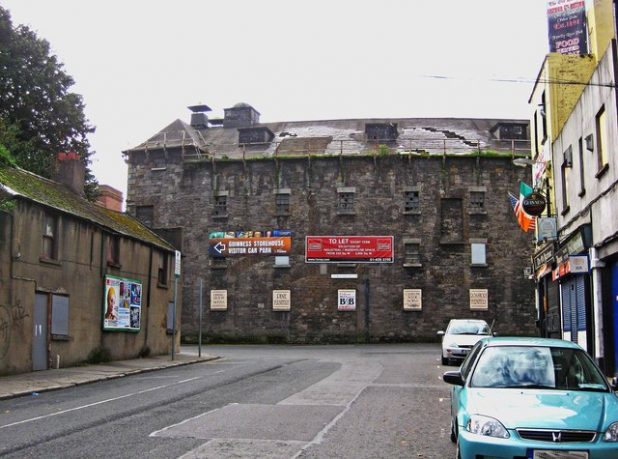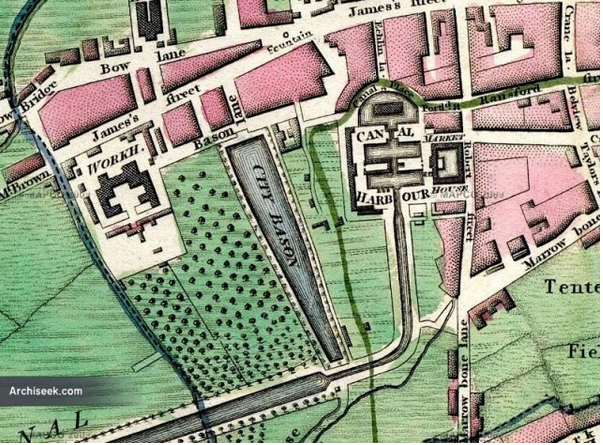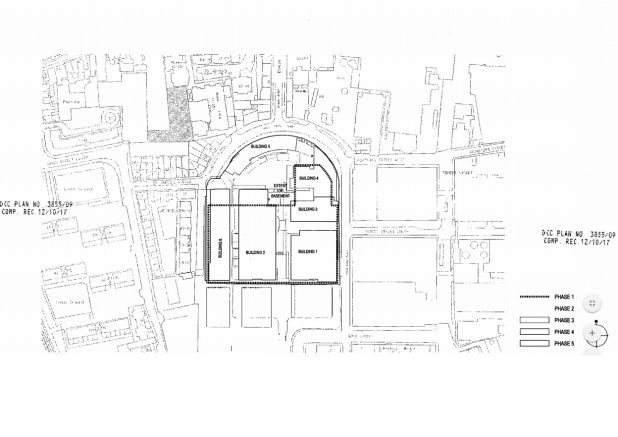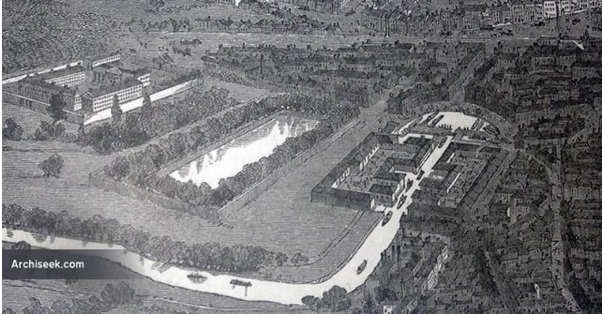Grand Canal Basin Development News by Christine Bond and Ross Murray – We take a look at the history and the recent major developments at the Grand Canal Basin, a site with much history and a future of major building work.
Work is finally starting on the Canal Basin Harbour development nearly 10 years from the original lodging of plans with the Dublin City Council and nearly 8 years after planning application was granted on the 1st of June in 2010.
The project is now under the auspices of Marlet Property Group Ltd rather than the original Canal Harbour Development Company. The site is 1.32 hectares of some of the most historical lands in the Dublin with a history that stretches back to when it was the original water supply for the city in the 12th century. By the 1680’s, it became a basin filled by the now hidden River Poddle.
Finally in 1721, a new city basin was built and the assurance of its waters supplied the early industries and homes of the area of south side Dublin. By the time the Grand Canal was built the basin needed the additional water supplies of water and a spur was sent to the Basin. The arrival of the canal and harbour was a catalyst for the growth of the area, especially the expansion of the Guinness Brewery and the many distilleries in the area.
Many older readers remember playing in the Basin in the summer, sometimes ‘cathching’ rides on barges before being caught and thrown off or crossing over the ice after a heavy freeze in the winter. The Basin was filled in the 1970’s and since than has primarily been a warehouse area and the local children primary play area disappeared.
Phase One of the plan development by Marlet is the clearing of older buildings and debris on the the site, preparing the grounds for building and having archeologist survey the area. Already seen are some stone arches from before the 18th century building of the basin, the arches from when aqueducts supplied water to the Liberties.
As we have reported elsewhere, during this work, an unexploded ordnance shell was found and removed by the Army. Locals speculated that this might be from the 1916 uprising as fierce fighting took place in the area between the Marrowbone Lane Distillery and the South Dublin Union (SDU), today St. James Hospital. The Irish Volunteers, under the command of Eamonn Ceannt, took over a number of buildings in the region.
The curved stone grain warehouse on the north end of the site is a protected structure and must be refurbished but a substantial development was granted behind this front. The plans, including the warehouse, “ compromise 6 no. buildings ranging in height from 3 to 12 storeys, partially over a single storey basement level, comprising a mix of office, aparthotel, residential, retail, cafe/bar/restaurant, medical, interpretative (cultural) uses and class 10 (public space/exhibition use” according to the planning application.building 1- 8 to 11 stories. max height 67.75m to 68.55 m. office accommodation and suites.
The plans as they stand are as follows:
building 2A- 9 st. Max height 60.60 m to 61.10 m. 1 retail unit at ground floor. office space.
building 2b – 7 to 8 stories. max height 55.40 to 56.85 m. 1 retail unit at ground floor. office space. connected to building 2a by glazed atrium at ground level
building 3 – 7 stories. max height 52.95 to 52.95 m. 1 retail unit and 1 public space area at ground level. office space
building 4 – 5 to 12 stories. max height 63.25 to 63.65 m. apart-hotel with restaurant, bar and gym from basement to ground floor. the apart-hotel will contain 84 rooms from the 1st to the fourth floor. the remaining floors will comprise 31 residential units. 6 X 1 bed, 23 X 2 bed and 2 X 3 bed.
building 5. Formerly Ryans Warehouse. The overall building as refurbished and extended will provide:- 1no. retail unit at ground floor level, 1no. bar/cafe/restaurant at ground, 1st and 2nd floor levels with terrace at 1st floor level, with associated outdoor terrace at ground level to the south of the building; 1no. interpretative centre unit (cultural use) at 1st and 2nd floor levels with associated retail unit at ground floor level; and 1 no. medical centre at 1st to 3rd floor levels, with terrace at 3rd floor level.
Building 6 – 6 stories max height of 45.2m to 47.12m. This building will comprise a medical centre at ground to 5th floor levels.
These plans were first drawn up in 2008, a different Dublin. As part of Marlets submissions to Dublin City Council to comply with building requirements, in October 2017 they informed the planners they were preparing amendments to the proposed application. “The proposed amendments, which include a change in the uses of the permitted blocks and rationalisation of the permitted basement levels,”… “with a planning application due to lodge in Q4 of 2017”.
No additional applications have been lodged yet with the planners. The Fountain Resources Group will keep on eye on any new submissions. We would love to hear your stories of the Basin from it’s final days in the 50’s and 60’s.













When I was younger, my Grandfather told me about the City Basin. He said that there was, in truth, no City Basin at all. The whole thing was a grand cover up by the followers of Dr Richard Steevens who, as terms of his will, requested the founding of a hospital nearby.
The Society of the Fallen Traveller, as they were known, didn’t want the truth that the area was not only the largest red-light district in the world at the time, but was also the scene of an epidemic known as the Dancing Plague.
“People danced constantly for weeks, dying of heart attacks, strokes, dehydration, and exhaustion. The supposed cure for the ailment according to physicians of the time? More dancing.”
Alas, in the end there was over 7,000 dead, all having, literally, danced themselves to death. In order to stop the disease from spreading, the Society of the Fallen Traveller convinced Dublin City’s elders to raze the area to the ground and flood it with water from the nearby Grand Canal and give the resulting body of water the title of the “City Basin”.
Over the years there have been rumours, whispers really, that something terrible happened there but these stories were hushed up or laughed at. Still, some of the older residents of the area say that on quiet nights, one can hear the wails and screams of those poor souls who danced themselves into oblivion.